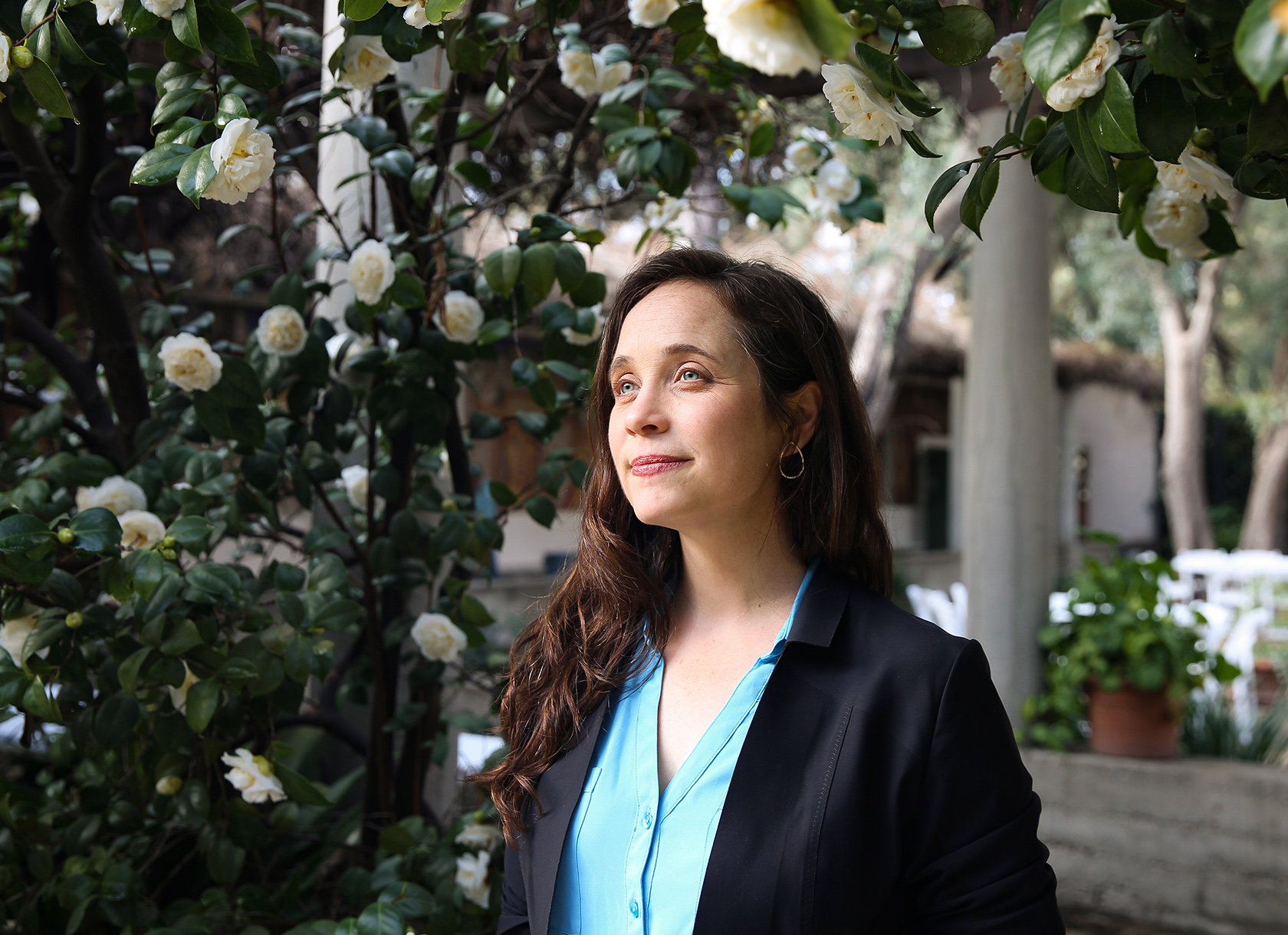
Last fall, Scripps welcomed Lesley Swick as director of facilities operations and sustainability. Swick comes to Scripps after serving for over 10 years as a sustainability, Green Building, and LEED consultant, having worked with clients such as the Los Angeles County Metro Transit Authority, UCSD, Toyota, and the City of Santa Monica. Swick earned her BA in community studies with a sustainability emphasis as well as a Master of Architecture degree. The Office of Marketing and Communications met with Swick to learn about her experience, her goals, and her green philosophy.
Marketing and Communications: How has your background primed you for your new role at Scripps?
Lesley Swick: I was the primary LEED administrator on Schow Hall in my previous role as a consultant, which is how I was introduced to Scripps and the Scripps team. That initiative was initially student-led—to pursue LEED Gold—and the College was very responsive to that desire. It was a wonderful collaboration between the students and the College, because it was really in the best interest of everyone. Sustainability was a goal for that building from the beginning.
My background in architecture with an emphasis on sustainability gives me a unique insight into the huge impact that building-use has on sustainability and resources. If we look at energy use and carbon footprint from a numbers-only perspective, building operations has the biggest impact. A secondary, but important issue comes down to human behavior. There’s an important synergy between thoughtful human behavior and efficient building operations.
MC: What defines a truly green building to you?
LS: The most sustainable building of all is the one that is already built. The idea of embodied energy is that we replace equipment as it completes its lifecycle—we don’t pull out functioning toilets to put in low-flow, we wait for their lifespan to end. The overall carbon cost of the former is exponentially greater.
MC: What is your office working on new to enhance Scripps’ sustainability?
LS: We have installed a photovoltaic array (solar panels) on the roof of Lang, which is phase one of four for solar that will ultimately yield 200 megawatt hours of electricity a year. For reference, this is the equivalent of the power used by almost 200 typical Southern California single family homes. In addition, we are on the cusp of hiring a new sustainability program coordinator, who will infuse new life and energy into our sustainability efforts. We are also collaborating with the other colleges to use our collective buying power to purchase biogas for our natural gas needs and the new Scripps-Pitzer science building is targeting a LEED Gold certification. Having worked as a LEED project manager for a decade, I can tell you that is no easy feat.
There are several important projects underway that are student led, like Scripps Scrapps, the sustainability fair, and the sustainability committee. Plus, the garden behind Browning Hall is stewarded by the Scripps Garden Club students who also sell the produce and manage the composting program on campus. We also have the in the Food Recovery Network, Scripps’ olive oil, composting in the dining hall, and the green bike program. Further, the team at the Commons have worked hard to put together a plant-based menu that will be available for the Spring semester, and they manage the green veggie towers that live in Holden Court. Collectively, these efforts amount to great strides towards the ongoing sustainability of Scripps.
MC: What excited you most about your new role at Scripps?
LS: First, I would be remiss if I didn’t mention the exceptional group of people that I get to work with in the facilities department. From Grounds to Custodial to Maintenance, this is a group of individuals dedicated to the longevity of Scripps and a positive student experience. I would encourage our Scripps community to say thank you to our team. They really keep this campus beautiful and functioning.
I am also excited about what I see as a wonderful collaboration between our passionate and knowledgeable students working with the sustainability committee and responding to the charge handed to us from president Tiedens to put together a long-term sustainability plan.
I envision Scripps’ sustainability plan as a long-range, big-picture plan—what’s called “seventh-generation thinking” because it asks us to consider how our actions affect the generation seven beyond our own. At Scripps, for example, it can be challenging to create a five-year plan when you’re a junior or senior, because you want to see the change you’ve affected. But, if you can think ahead to the students who will be affected by that plan—those coming seven college generations after you— and who will be continuing to implement that plan, it’s like planting a tree for fruit you won’t be harvesting but that someone else will get to eat. Sometimes, the change that happens quickly is not the lasting change; in order to be truly sustainable, we must consider the human element and the institutional elements and get buy-in from everyone in the community; then we will create change that can be lasting. I am incredibly honored to be a part of planting the literal and proverbial seeds for some long-term change.

